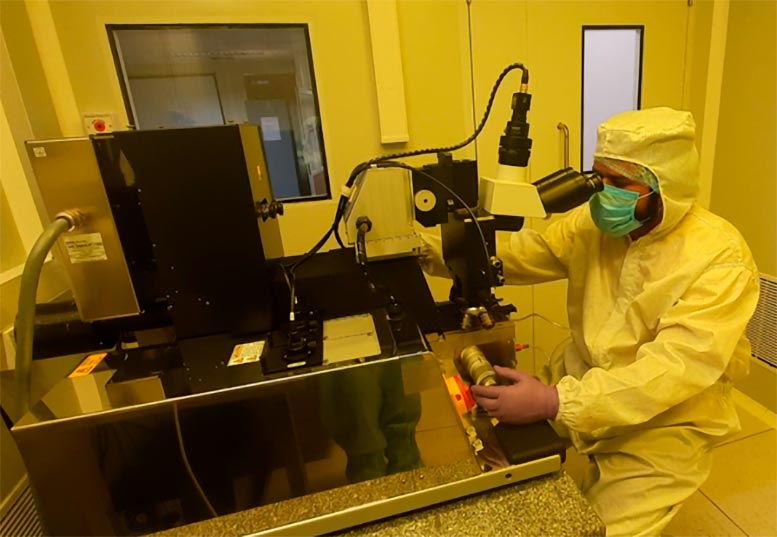
A novel ultramicro supercapacitor showcases superior energy storage and a potential revolution in device power sources.
Researchers at the Department of Instrumentation and Applied Physics (IAP), Indian Institute of Science (IISc), have designed a novel ultramicro supercapacitor, a tiny device capable of storing an enormous amount of electric charge. It is also much smaller and more compact than existing supercapacitors and can potentially be used in many devices ranging from streetlights to consumer electronics, electric cars, and medical devices.
Most of these devices are currently powered by batteries. However, over time, these batteries lose their ability to store charge and therefore have a limited shelf-life. Capacitors, on the other hand, can store electric charge for much longer, by virtue of their design. For example, a capacitor operating at 5 volts will continue to operate at the same voltage even after a decade. But unlike batteries, they cannot discharge energy constantly – to power a mobile phone, for example.
The Advantage of Supercapacitors
Supercapacitors, on the other hand, combine the best of both batteries and capacitors – they can store as well as release large amounts of energy, and are therefore highly sought-after for next-generation electronic devices.
In the recent study, published in ACS Energy Letters, the researchers fabricated their supercapacitor using Field Effect Transistors or FETs as the charge collectors, instead of the metallic electrodes that are used in existing capacitors. “Using FET as an electrode for supercapacitors is something new for tuning charge in a capacitor,” says Abha Misra, Professor at IAP and corresponding author of the study.

Innovations in Capacitor Design
Current capacitors typically use metal oxide-based electrodes, but they are limited by poor electron mobility. Therefore, Misra and her team decided to build hybrid FETs consisting of alternating few-atoms-thick layers of molybdenum disulfide (MoS2) and graphene – to increase electron mobility – which are then connected to gold contacts. A solid gel electrolyte is used between the two FET electrodes to build a solid-state supercapacitor. The entire structure is built on a silicon dioxide/silicon base.
“The design is the critical part, because you are integrating two systems,” says Misra. The two systems are the two FET electrodes and the gel electrolyte, an ionic medium, which have different charge capacities. Vinod Panwar, PhD student at IAP and one of the lead authors, adds that it was challenging to fabricate the device to get all the ideal characteristics of the transistor right. Since these supercapacitors are very small, they cannot be seen without a microscope, and the fabrication process requires high precision and hand-eye coordination.

Performance and Future Plans
Once the supercapacitor was fabricated, the researchers measured the electrochemical capacitance or charge-holding capacity of the device by applying various voltages. They found that under certain conditions, the capacitance increased by 3000%. By contrast, a capacitor containing just MoS2 without graphene showed only an 18% enhancement in capacitance under the same conditions.
In the future, the researchers are planning to explore if replacing MoS2 with other materials can increase the capacitance of their supercapacitor even more. They add that their supercapacitor is fully functional and can be deployed in energy-storage devices like electric car batteries or any miniaturized system by on-chip integration. They are also planning to apply for a patent on the supercapacitor.
Reference: “Gate Field Induced Extraordinary Energy Storage in MoS2-Graphene-Based Ultramicro-Electrochemical Capacitor” by Vinod Panwar, Pankaj Singh Chauhan, Sumana Kumar, Rahul Tripathi and Abha Misra, 20 February 2023, ACS Energy Letters.
DOI: 10.1021/acsenergylett.2c02476
4 Comments
Capacitors don’t “store charge”, they store energy. Their charge is zero.
Come on people.
55 mF/cm^2 is not going to power anything, and the fact that it needs atypical materials means it won’t be integrated into cmos fabrication. This is academically interesting, but applies to none of the applications the writer listed.
Gamechanging, eh? The game of vapourware never changes.
Well done